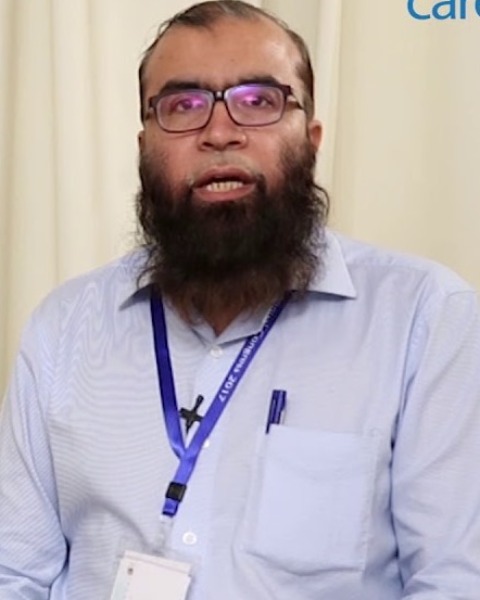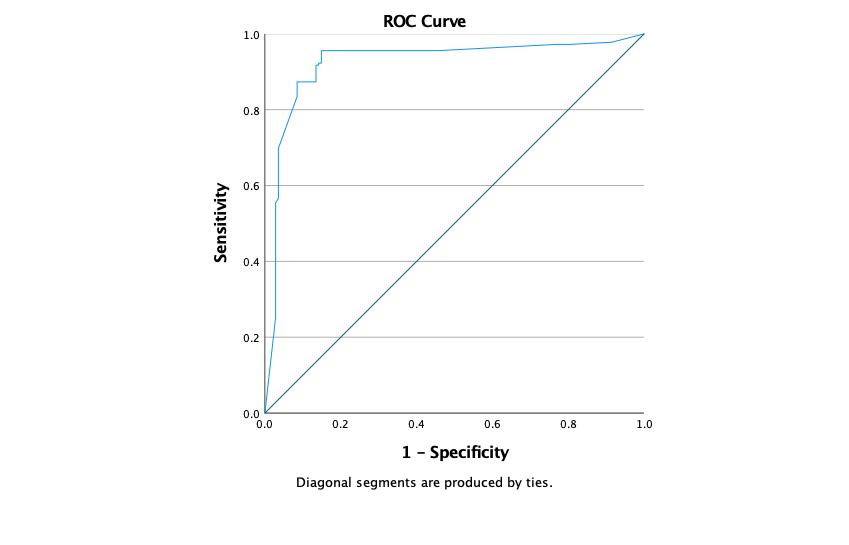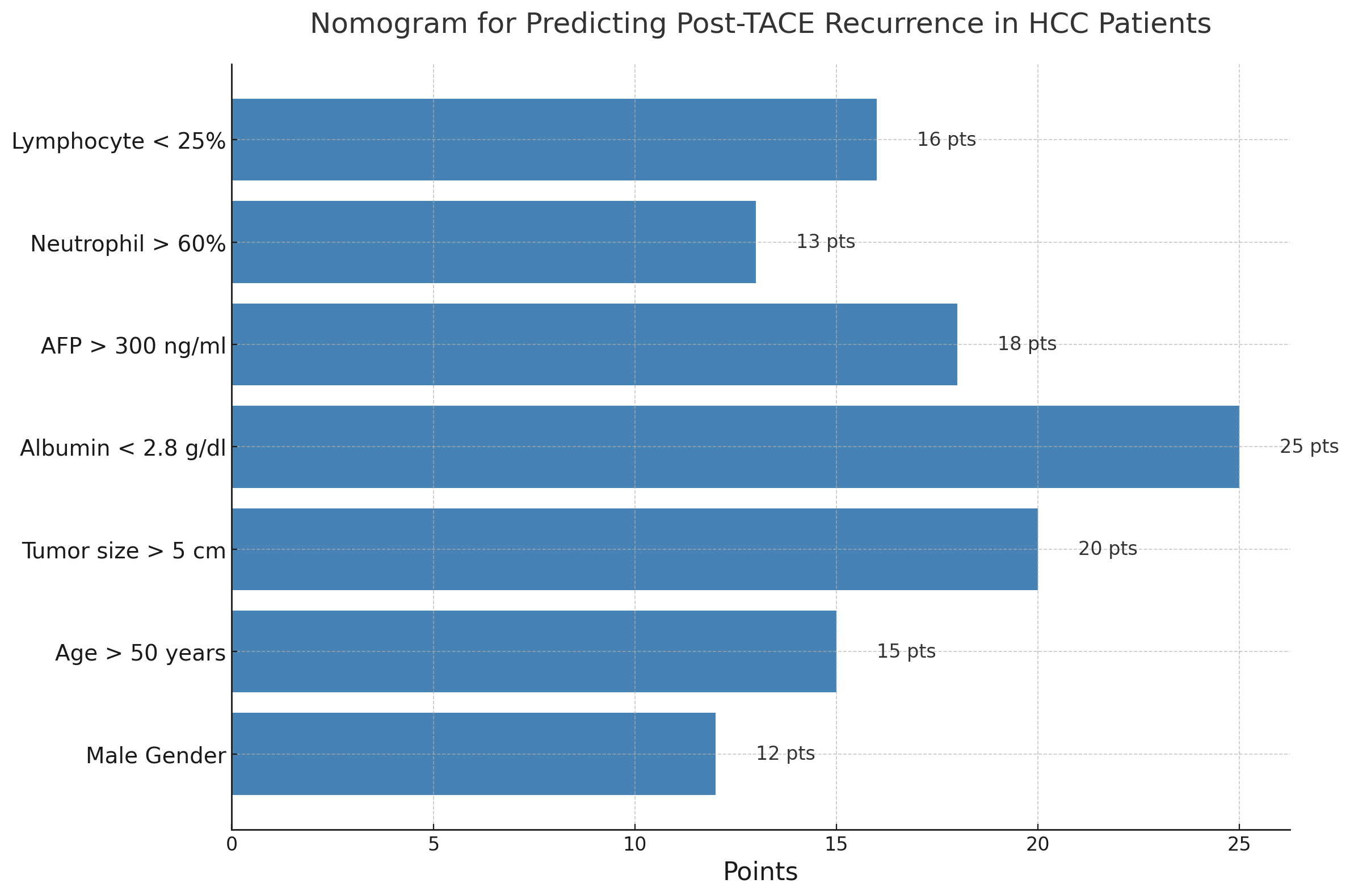Oral Paper Presentation
Annual Scientific Meeting
Session: Plenary Session 3A: Liver / Functional
41 - Role of “MANLATA Model” in Predicting Recurrence in Patients With Hepatocellular Carcinoma Undergoing Trans Arterial Chemo-Embolization
Tuesday, October 28, 2025
2:55 PM - 3:05 PM PDT
Location: North Ballroom 120D

Nasir Hassan Luck, MBBS
Sindh Institute of Urology and Transplantation
Karachi, Sindh, Pakistan
Presenting Author(s)
Raja Taha Yaseen TY. Khan, MBBS, FCPS, ESEGH1, Hina Ismail, FCPS2, Nasir Hassan Luck, FCPS1, Ali Hyder, FCPS3, Sanjay Kirshan Kumar, FCPS4, Salman Ahsam, FCPS, MRCP, ESEGH5
1Sindh Institute of Urology and Transplantation, Karachi, Sindh, Pakistan; 2University Hospital Limerick, Limerick, Limerick, Ireland; 3Chandka Medical College, SMBBU, Larkana, Sindh, Pakistan; 4Ahalia Hospital, Abu Dhabi, Abu Dhabi, United Arab Emirates; 5Social Security Hospital, Faislabad, Faisalabad, Punjab, Pakistan
Introduction: Hepatocellular carcinoma (HCC) represents the sixth most common neoplasm in terms of incidence and the third leading cause of cancer death. Unfortunately, most of patients with HCC are diagnosed at an advanced stage and are treated by the palliative options. Trans-arterial chemoembolization (TACE) is the best therapeutic option in this situation. Our aim was to identify the non-invasive predictive factors and to build a model using these predictors suggestive of post TACE recurrence of HCC.
Methods: It was a retrospective study which included all the patients aged 18-65 years with HCC undergoing TACE from January 2010 to December 2018.While, the patients with early stage HCC undergoing resection, advanced staged HCC bearing portal vein thrombosis, metastatic HCC, patients with poor ECOG status and advanced child class were excluded. SPSS version 26.0 was used for the data analysis and R software was utilized for building a predictive model. Univariate and multivariate logistic regression analysis was performed to identify the independent predictors of post TACE recurrence. A nomogram was then built using R software and a model was then developed (“MANLATA model) for which AUROC was obtained and at an optimal cutoff, the diagnostic accuracy of the model was obtained. The model was then internally validated for the prediction of post-TACE HCC recurrence.
Results: A total of 323 patients were included in the study. Among them,281 (87%) were males. Baseline characteristics of all patients undergoing TACE were recorded. Post TACE recurrence was observed in 182 patients. On multivariate analysis, male gender, age > 50 years, tumor size > 5cm, serum albumin <2.8 g/dl , serum alphafetoprotein ≥300 ng/ml, neutrophil count >60 % and lymphocyte count <25% were independent predictors of post TACE recurrence. Using these variables, a model “MANLATA model” was developed which had an AUROC of (0.924) and at a cutoff >60, it had an excellent sensitivity of 91.76%, specificity of 85.82% and diagnostic accuracy of 90.98% in predicting post TACE recurrence. In validation cohort, this model showed an excellent sensitivity of 90.21%, specificity of 83.29% and diagnostic accuracy of 89.16% in predicting post-TACE HCC recurrence.
Discussion: This non-invasive model had an excellent diagnostic accuracy in predicting post TACE recurrence. However, further studies comprising of large sample sizes are required to validate this model.

Figure: Points allocation of different variables in "MANLATA Model"

Figure: Area Under the Receiver Operating Curve (AUROC) for MANLATA model in predicting post TACE HCC Recurrence (AUROC-0.924)(P <0.001)
Disclosures:
Raja Taha Yaseen Khan indicated no relevant financial relationships.
Hina Ismail indicated no relevant financial relationships.
Nasir Hassan Luck indicated no relevant financial relationships.
Ali Hyder indicated no relevant financial relationships.
Sanjay Kirshan Kumar indicated no relevant financial relationships.
Salman Ahsam indicated no relevant financial relationships.
Raja Taha Yaseen TY. Khan, MBBS, FCPS, ESEGH1, Hina Ismail, FCPS2, Nasir Hassan Luck, FCPS1, Ali Hyder, FCPS3, Sanjay Kirshan Kumar, FCPS4, Salman Ahsam, FCPS, MRCP, ESEGH5, 41, Role of “MANLATA Model” in Predicting Recurrence in Patients With Hepatocellular Carcinoma Undergoing Trans Arterial Chemo-Embolization, ACG 2025 Annual Scientific Meeting Abstracts. Phoenix, AZ: American College of Gastroenterology.
1Sindh Institute of Urology and Transplantation, Karachi, Sindh, Pakistan; 2University Hospital Limerick, Limerick, Limerick, Ireland; 3Chandka Medical College, SMBBU, Larkana, Sindh, Pakistan; 4Ahalia Hospital, Abu Dhabi, Abu Dhabi, United Arab Emirates; 5Social Security Hospital, Faislabad, Faisalabad, Punjab, Pakistan
Introduction: Hepatocellular carcinoma (HCC) represents the sixth most common neoplasm in terms of incidence and the third leading cause of cancer death. Unfortunately, most of patients with HCC are diagnosed at an advanced stage and are treated by the palliative options. Trans-arterial chemoembolization (TACE) is the best therapeutic option in this situation. Our aim was to identify the non-invasive predictive factors and to build a model using these predictors suggestive of post TACE recurrence of HCC.
Methods: It was a retrospective study which included all the patients aged 18-65 years with HCC undergoing TACE from January 2010 to December 2018.While, the patients with early stage HCC undergoing resection, advanced staged HCC bearing portal vein thrombosis, metastatic HCC, patients with poor ECOG status and advanced child class were excluded. SPSS version 26.0 was used for the data analysis and R software was utilized for building a predictive model. Univariate and multivariate logistic regression analysis was performed to identify the independent predictors of post TACE recurrence. A nomogram was then built using R software and a model was then developed (“MANLATA model) for which AUROC was obtained and at an optimal cutoff, the diagnostic accuracy of the model was obtained. The model was then internally validated for the prediction of post-TACE HCC recurrence.
Results: A total of 323 patients were included in the study. Among them,281 (87%) were males. Baseline characteristics of all patients undergoing TACE were recorded. Post TACE recurrence was observed in 182 patients. On multivariate analysis, male gender, age > 50 years, tumor size > 5cm, serum albumin <2.8 g/dl , serum alphafetoprotein ≥300 ng/ml, neutrophil count >60 % and lymphocyte count <25% were independent predictors of post TACE recurrence. Using these variables, a model “MANLATA model” was developed which had an AUROC of (0.924) and at a cutoff >60, it had an excellent sensitivity of 91.76%, specificity of 85.82% and diagnostic accuracy of 90.98% in predicting post TACE recurrence. In validation cohort, this model showed an excellent sensitivity of 90.21%, specificity of 83.29% and diagnostic accuracy of 89.16% in predicting post-TACE HCC recurrence.
Discussion: This non-invasive model had an excellent diagnostic accuracy in predicting post TACE recurrence. However, further studies comprising of large sample sizes are required to validate this model.

Figure: Points allocation of different variables in "MANLATA Model"

Figure: Area Under the Receiver Operating Curve (AUROC) for MANLATA model in predicting post TACE HCC Recurrence (AUROC-0.924)(P <0.001)
Disclosures:
Raja Taha Yaseen Khan indicated no relevant financial relationships.
Hina Ismail indicated no relevant financial relationships.
Nasir Hassan Luck indicated no relevant financial relationships.
Ali Hyder indicated no relevant financial relationships.
Sanjay Kirshan Kumar indicated no relevant financial relationships.
Salman Ahsam indicated no relevant financial relationships.
Raja Taha Yaseen TY. Khan, MBBS, FCPS, ESEGH1, Hina Ismail, FCPS2, Nasir Hassan Luck, FCPS1, Ali Hyder, FCPS3, Sanjay Kirshan Kumar, FCPS4, Salman Ahsam, FCPS, MRCP, ESEGH5, 41, Role of “MANLATA Model” in Predicting Recurrence in Patients With Hepatocellular Carcinoma Undergoing Trans Arterial Chemo-Embolization, ACG 2025 Annual Scientific Meeting Abstracts. Phoenix, AZ: American College of Gastroenterology.

